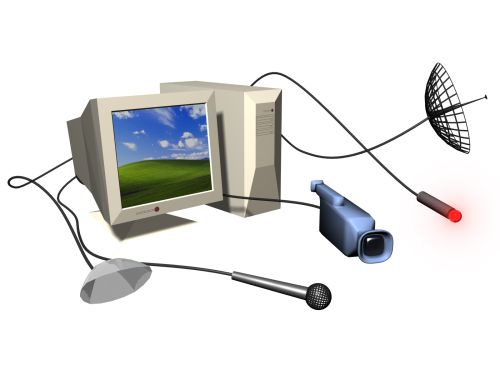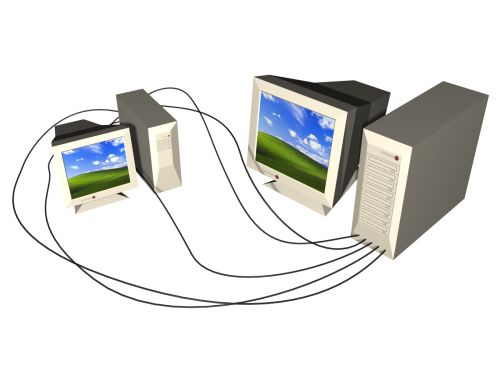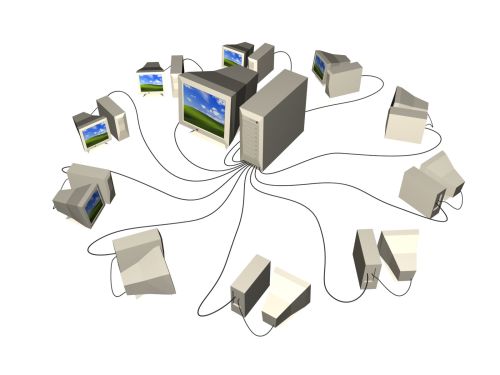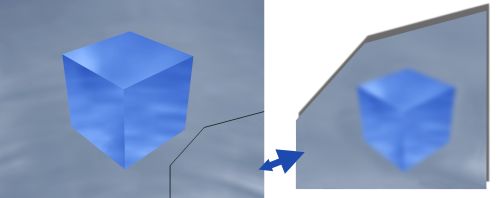The World Mind
It is the second highest level of truth after God’s. Knowledge is its determining factor.
Once again, and probably not for the last time, I point out that, for the sake of clarity and understand ability, this is a great simplification as it is undoubtedly very problematic to speak so unambiguously about a hierarchy of truth.
Perhaps this is the best time to comment on the possible and frequent apparent contradiction and paradox between different realities when seen from the different levels of truth.
The best is to illustrate it with an example.
From the fourth level of truth (Human – Space and Time), the human brain with its receptors, the senses, works like a tuner (the receptors processing input signals) that conveys information to the consciousness. But it’s only a tuner, and consciousness functions independently of it.
Form the second level of truth (Consciousness – The Created World), the World Mind projects everything to the consciousness of beings. No brain, sensor, body and, basically, no person exists in their material form.
There is an apparent contradiction between these two truths, yet both are valid. It all depends on the angle, or the level of truth, we look at it from.
Consciousness is another category concept like god or world, and it’s therefore always necessary to use it very carefully, if possible, making clear what it means in a given context.
There is nothing (not only in the sense of nobody) that lacks consciousness, as there is nothing but Consciousness, there is nothing but only thoughts, the World Mind. The World Mind knows everything because it is everything.
So, Consciousness should be understood as a whole made of parts that are aware of their relative separation and independence (it could be said that they have consciousness themselves, which means that the word consciousness should be understood differently, as being aware).
The relation of God – World Mind with regards to the created world can be compared with the relation of human mind – human consciousness with regards to thoughts.
A commonly used analogy in this regard is the sea, which is made of drops of water that are in certain phases independent, but still part of an infinite whole from the perspective of a drop.
The reason behind this relative independence, separation and freedom of the parts of the Universal Consciousness is that it is the only way that can lead to, simply put, conflicts—the engine of development and creativity.
A fully unified Consciousness cannot result in any development, movement, and exchange of information, creative processes, new information, or the combination thereof.
Everything that takes place is projected to our consciousness by the World Mind. This means the part of the Consciousness self-aware as an entity (I am using this term here as a non-closely defined whole entity—a part of consciousness), as an independent Being, seemingly separated from the Immanent God.
Virtual reality
Even though we still believe that we perceive the entire real world through our senses, and that this is a fundamental and indisputable fact, I will once again use the analogy of a computer to try to explain why it may not be so.
A computer (though a robot would be a better analogy for a human) perceives the world that surrounds it through sensors (cameras, microphones), and we can safely imagine that this computer is fitted with more than five senses. It can, for instance, perceive radioactivity, electromagnetic or even gravitational waves. The received information is processed and assessed, resulting in its perception of the world (see Fig. 3).

Fig. 3
Now, imagine that we disconnect those sensors and connect our computer to a supercomputer that passes on all the information in the same way it receives it from its own sensors (see Fig. 4). This would also include the information still being received by the computer’s own sensors.

Fig. 4
This computer would process and assess that information in the same way as when it receives it from its own sensors, perceiving as real the world generated by the supercomputer.
The supercomputer could thus generate a common virtual reality for many subordinate computers (see Fig. 5).
If there was also a feedback between the computer and the supercomputer (the perception of the virtual world of each computer and their reactions to it are send back to the supercomputer), nothing would prevent the supercomputer from allowing interactions among the computers.

Fig. 5
We can imagine, on the same principle, the function and the mutual relations of the World Mind and each entity (Beings)—the individual parts of Consciousness.
The relation of each Being (individual consciousness) with the World Mind can be imagined as an infinitely massive computer network.
Each Being is like a computer in a network with all the other computers (Beings). The information in this network is transferred in zero time. The complete connection of all the computers results in a totally new quality of consciousness, which could be described as the consciousness of a supercomputer. With its new level—infinitely higher in quality and quantity than each computer—this supercomputer transmits “everything” to the consciousness (RAM, in computer jargon) of each computer, which, as a component of the supercomputer, also contributes to generate this “everything” transmitted to each computer.
The relation of the World Mind as Immanent God with some of the entities can also be imagined as the relation of a hologram with its parts. Each part of a hologram contains information of the whole, but the smaller the part, the less accurate the information becomes. This can be seen clearly in a hologram. When you look at a hologram, you always see a picture of the whole object shown, but the smaller the part is, the worse the quality of the image becomes (see Fig. 6).

Fig. 6
And that is why the appeal to the common sense (“if I see, hear or feel something, it must be so”) is in this case misleading. There is really no proof acceptable for an orthodox scientist that this is not so, nor can there be. It is only claim against claim, faith against faith. For the sake of objectivity, it should be noted that everyone acts as if their case was not one of faith but knowledge, while the others’ are about faith and ignorance.
One faith (one model of existence) relies on the so-called common sense and established sciences (meaning the sciences that, with the unshakable character of the Cartesian-Newtonian paradigm, have a model of the world based on traditional scientific ideas).
The other (the second model of existence) relies on logic, the extrasensory and transcends perception of the nature of things, but using also the knowledge of the established sciences. This second, alternative model of existence also includes the model of the world of the established sciences.
I am not saying that the model of the world created by the established sciences is false. It is true to the extent of the possibilities of modern science, which cannot be objected.
What can be objected, however, is that it is incomplete, that it does not address all the aspects of existence?
Why doesn’t it address those other aspects of existence? Because it claims they don’t exist. And if something doesn’t exist, there is no reason to study it.
To describe the model of existence in this book, I used in the previous paragraph the words second and alternative, which are very inaccurate and I used them only following the current practice.
It is as inaccurate as using “alternative medicine” for treatments that had been known thousands of years before modern medicine, which even today are used by most people on the planet.
In fact, the model of existence based on mentalism is tens, maybe even hundreds of thousands years older than the one based on the Cartesian-Newtonian paradigm.
To avoid unnecessary misunderstandings, I am not denying modern science’s ability to think logically. I only want to express in this context that modern science (meaning the large majority of the scientific community, and not everyone identified as a “scientist”) is not able to sufficiently, systematically, logically and coherently explain all phenomena and the nature of the world, unlike the theory of mentalism, which is fully able to do so.
The development of computers, computer games and the internet has given us a better idea and simile to understand this “cosmic game”.
Today, the internet has on-line games where many thousand people from the all over the world can take part (meaning in a given game at a given moment). Each game has an environment and basic rules generated by programmers. A player chooses a character to play with and, according to the rules, defines its properties, appearance and skills. Then the player chooses a goal on the basis of which forms a team with other players, or rather, their characters; or fights them. Games that simulate normal life have also become very popular. If a character is no longer fun or its life in the game has somehow come to an end, and the player still likes the game, another character can be chosen (generated) to play again. And it’s no problem to imagine someone playing several games and being simultaneously the co-creator of several characters.
The Being can also be imagined as such, a cosmic divine game with a Creator—a great programmer—who generates the environment and the rules of the game, and Multidimensional Beings who choose characters (in the case of our space-time, incarnations). It is necessary to bear in mind that, given the timelessness of this level, the Being plays all the games simultaneously, and, given the polarity of creation, it plays all imaginable and—for us—unimaginable roles, which roles may also take the form of extreme figures like Christ, Buddha, Hitler, Stalin, or even Lucifer or the Archangel Gabriel.
Once we choose a specific game and character in the cosmic game, we must follow its basic rules. This means that our actions will cause certain effects determined by the program of the Creator of the game, of which we are at the same time co-creators. This is called karma. Each of us, as part of the Being, and therefore a part of the hologram of the consciousness of the Being, have all the aspects of the Being, including those we see as the most positive and the most negative. The spiritual level of the incarnated beings (if it makes sense to speak of such thing) could perhaps be expressed by the level of understanding of the fundamental principle of yin and yang, and the balance of all the aspects of the spirit as part of the hologram of the consciousness of the Multidimensional Being, in particular, those we see as the most loathsome; though, some souls can’t easily accept even the most positive aspects, and cope with them, because they feel that they don’t deserve them due to their previous lives.
Imagine we are magnets. We have no other option than to understand and accept the fact that we are made of a north and a south pole. It is not important here whether we denominate the north pole as positive and the south as negative.
Besides, we must accept that what we consider positive, others may see as negative, and vice versa.
From this perspective, you will notice how absurd are the calls of different religions (in particular the ideology of the Church) such as “we will eliminate all the negative south poles and we will have paradise on earth”, or “we will eliminate all the negative north poles and peace and prosperity will be everywhere” (it could be substituted with the concept of sustainable development). In this context, I include under religious the ideologies of many materialistic -isms, because, for the most part, they are nothing but some form or another of faith and religion.
Shlédnutí: 101